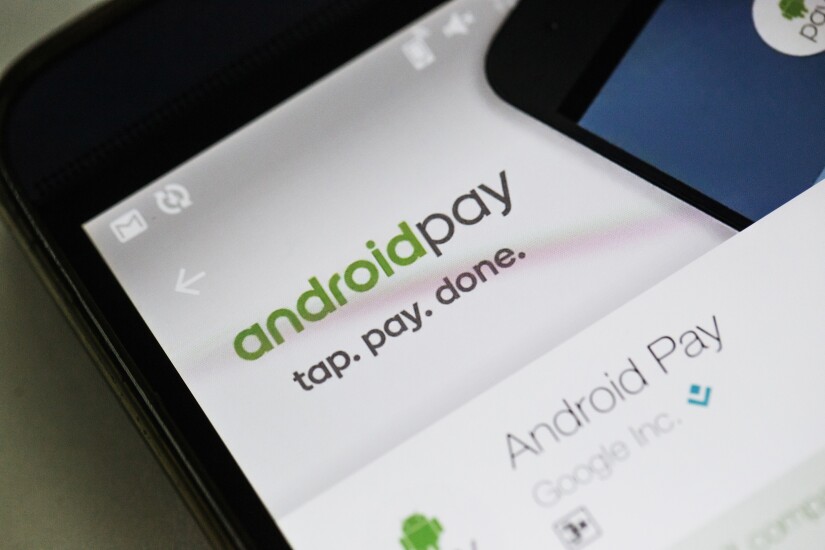

Function over form
The approach is reminiscent of Amazon's Echo devices, which are bland monolithic speakers that can be loaded with "skills" to enable them to place calls, make purchases, activate light switches and tell jokes.
Even in Token's promotional photos, the ring is a hefty lump of metal that dwarfs the model's wedding band. But what Token's ring lacks in beauty, it makes up for in brains.
Token is working with card networks, mass transit agencies and providers of both physical and digital security to develop a biometrically activated ‘swiss army knife’ of RFID connectivity. Out of the gate, Token is designed with multiple functions such as password storage; physical access to buildings, cars and networks; and interoperability with NFC enabled payment cards and mass transit networks.

'Universal' acceptance
The park has been designed to accept TapuTapu wristband payments for admittance, food and souvenirs, but also to participate in the "virtual line" service, in which patrons can reserve a spot in line at a particular ride and the band will vibrate when it is time for their turn.
Hersheypark was one of the first theme parks to test contactless payment wristbands in 2012, but dropped its use a year later when reporting that the
Hersheypark's failing might have been that its band was not fully integrated into the park experience; it was little more than a wearable prepaid card. Walt Disney Co. launched its more ambitious
Like Universal's TapuTapu, Disney also allows Magic Band users to skip long lines through the Disney FastPass+ system.
But while Disney's wearable still resembles a simple bracelet, Universal's TapuTapu has the look and feel of a smartwatch, giving visitors notifications and alerts related to happenings in the park, deals at restaurants, and alerts about the patron's place in a virtual line.

Looking cool
In a partnership with sunglasses manufacturer Local Supply and wearable fintech provider Inamo, Visa's WaveShades initiate contactless payments through a chip in the arm of the glasses. In choosing Inamo as a partner, Visa will operate WaveShades on the same payment platform that the Australian company developed last year called Inamo Curl, a waterproof wearable band designed for beach lovers and surfers.
Oberthur Technologies is providing the tech behind the contactless sunglasses, while Heritage Bank will serve as the authorized deposit-taking institution in Australia.
Visa is banking on WaveShades to fit more easily into the mainstream than Google's far more high tech project.
From about late 2013 to early 2015, Google experimented with payment options for
When first unveiled, Google sold Google Glass only to early adopters, some of which worked at mobile payments or loyalty service providers like
Even as some companies continued to show an interest in the high-tech wearable, Google finally

Need for speed
Users who have already downloaded the Speedpass+ app may select a pump number first and complete payment using the Apple Watch—even if the terminal lacks Near Field Communication technology—based on an update launched April 27 in the App Store.
With the Speedpass+ update, iPhone users also may log in to the app with Touch ID.
Speedpass dates back to

Big on authentication
"The 'things' connected to the Internet do not have a way to authenticate the human being interacting with them," said Matthias Vanoni, cofounder and CEO of Biowatch, a Lausanne, Switzerland startup that uses vein recognition technology to authenticate people for a variety of purposes. "But the 'things' can recognize a device like a wearable. Biowatch's recognition of the wearable means recognizing the human being behind that."
Biowatch has been gradually attracting attention since its founding two years ago. It recently drew a $1.2 million seed round and a cash stipend of about $35,000 for winning a Visa developer contest at the recent Mobile World Congress, a prize that comes with a significant boost to the startup's visibility and reputation.
"Visa will be useful to increase our credibility towards partners and thus accelerate product development," Vanoni said. "That will allow us to integrate more easily into bank applications worldwide."

Pocket change
The use cases for such a system include consumers going for a run or a spa visit where having a phone is not otherwise necessary, but there is still a need to spend a few bucks on a bottle of water or other small items.
This concept led the tech companies to form the
The companies built the CCP on the premise that Near Field Communication technology for contactless payments could be used to treat wearables as stored-value containers managed by an app. The platform would provide access to a small amount of money and for a limited time period.
The payments industry has often tested this model without considering it to be the end goal. Many early contactless and mobile payment pilots were limited to festivals, stadium events and short-term programs like the Olympics.

Designer fashion
Movado Group is partnering with Google for Movado Connect, a collection of five new men’s smartwatches featuring Android Wear 2.0 with payment capabilities to be unveiled later this month at Baselworld, the high-end jewelry and watch show in Switzerland.
Designer brands in Movado’s new line include styles from Hugo Boss and Tommy Hilfiger, the company said in the release. Prices will start at $495 for watches rolling out this fall.
Electronics companies including South Korea’s





